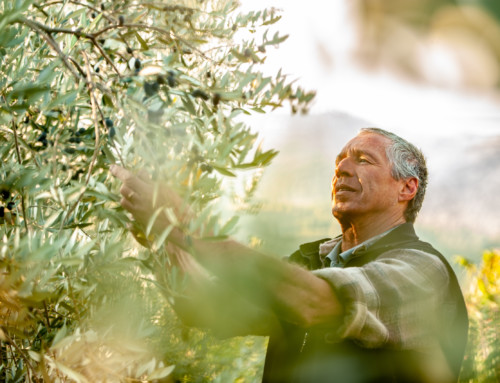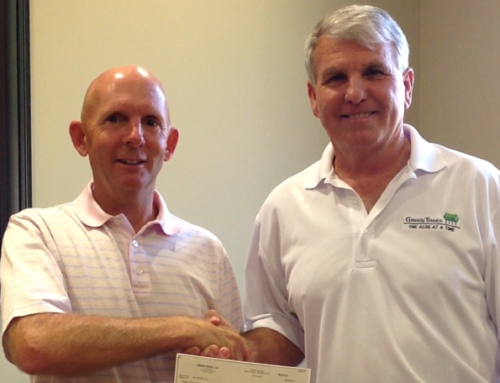The pandemic may have given us all a breather in the battle against climate change. As the nation ground to a halt, carbon emissions fell 5.8% to their lowest level in 3 decades. But as we return to “normal,” reports from the National Oceanic and Atmospheric Administration (NOAA) show the Earth’s CO2 levels are quickly returning to an all-time high. As transportation demands resume, and the use of carbon-intensive fuel restarts the world, soaring carbon emissions are on track to erase any gains made during the last year.
While this should come as no surprise, I see hopeful signs that we, as a nation, are becoming more socially conscious in the struggle to reverse climate change. As disturbing trends become more persistent, more of us are showing deeper concern. Recently, I walked into a gas station to get a coffee where a customer was in a spirited debate with the poor attendant over the fuel giant’s massive responsibility to reverse the trends. The resourceful attendant admitted the customer was not entirely wrong – but not entirely right – and insisted the customer google topics related to the gas giant’s sustainability programs. That was a quick-thinking response, but the point being, the topic is more mainstream than ever. More of us feel directly affected and ask, “What is being done? What can I do?”
Pursuant to SB 1374, Virginia Secretary of Agriculture and Forestry, Bettina Ring and Secretary of Natural Resources, Matthew Strickler are doing their part. Reducing carbon emissions is integral to relief, but they wisely ask, how are we removing what is already there? Ring and Strickler are convening a task force to study carbon sequestration (removal) within the natural environment and looking at all options. As a leader in the development of trees as a natural solution removing carbon, Co-Founder of ACRE Investment Management, Chandler Van Voorhis, was invited to participate in this important task force, and he has accepted.
No doubt, Van Voorhis will update the Secretaries on the steadily growing demand for the carbon credits trees can create. Here again, a more socially conscious world is driving corporate America to offset what it cannot yet reduce by buying credits. As a result, increased demand for a limited supply of credits is driving the price higher and higher. In the business of growing trees for carbon sequestration, this draws significant attention begging the question, “Why aren’t we planting more trees?” That’s the plan.
Corporate America is engaged, but small and medium sized businesses realize they need to join the fight, too. It is no surprise customers direct their purchase decisions to businesses that are cleaner and greener. Take Artisan Dental in Madison, WI, the first dental practice in the nation to become carbon neutral by purchasing carbon credits. Their widely distributed newsletter promotes their carbon neutrality and that draws new customers who will support their commitment.
Area horsemen should take note that even horse shows are taking their carbon footprint seriously. The upcoming ArenaMend Showjumping Classic CSI5* held at the Greenbriar Resort, October 13-17, has pledged to be the first FEI-sanctioned competition in the World to be carbon neutral. Kudos to the show’s founder Dan Carr for leading the way. Joe Fargis, a Director of the Upperville Horse Show, points out the massive oaks at America’s first horse show have been sequestering carbon since long before 1853. So true! While their committee is busy planting more trees, Fargis is keen to know how carbon offsets can accelerate their goal to achieve a net zero footprint. Our firm is helping them all.
Recently, The Washington Post Business section published an article reporting firms are betting on the appeal of labels that report a product’s carbon impact. Says one sustainability officer, “We think of carbon as the new calorie.” Will transparency help motivate change? I’d say, yes.
Answering the call to reverse climate change will require this, and more. In fact, a small revolution is necessary to face the challenge. We’re proud to be pioneers on the front lines. In the last year, this organization has committed to plant 100 million trees by 2030 as part of the US Trillion Trees Chapter. Our goal in Virginia is planting 2 million trees in the coming year.
That’s where you come in. There is a crying need for the land to grow more trees. Luckily for us all, the opportunity in Virginia has become doubly attractive, hence time to double down. As a landowner, the trees you grow can return the benefit of carbon credits over a 40-year plan for helping to clean the air. As well, the same trees will help you participate in the nutrient trading market that rewards you for cleaning the water. The leaves of the trees clean the air through photosynthesis. The roots of the trees clean the water by filtering the nutrient runoff before it reaches the Chesapeake Bay. By filtering nutrient runoff before it reaches the Bay, you help reduce the loathsome dead spot where no marine life can survive.
Coupled together, the programs create a changing view of how you value your land, especially land that may already be under conservation easement. Both programs are completely consistent with conservation easement obligations. I don’t know of another organization that can connect you to both carbon and nutrient trading markets, so we are unique. If you know of land where trees may enrich us all, we need to talk. To explain the two programs fully may take more space than the sainted Middleburg Eccentric can afford this month. But certainly, I am available if you are interested in knowing more. You may ask, “When is the best time to start growing trees?” The answer is now.
Robert Banner is Senior Project Officer at ACRE Investment Management in The Plains, VA. ACRE is a full-service natural capital asset platform for landowners to manage their ecological platform. He can be reached at rob@acre-investment.com, or 540-729-1335 cell.








